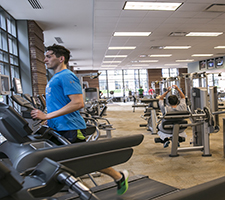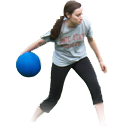
Why Running Is Such Perfect Cardio
There was once a time, just a few decades ago, when few people ran to stay in shape. Today, running is almost synonymous with exercise. If your goal is to be fit and healthy, you’re either a runner or someone who’s planning to start running really soon.
Running has become so popular, in part, because a mountain of evidence suggests it’s great for a long, disease-free life.
One 2014 study found that running is linked to a 45% drop in risk of death due to cardiovascular disease. “Runners on average lived three years longer compared to non-runners,” says study author D.C. Lee, an assistant professor of kinesiology at Iowa State University. Those mortality benefits held fairly steady regardless of how fast, how long or how often a person ran.
Lee and his colleagues just published a follow-up report showing even more impressive benefits. Running for about two hours each week was linked to three extra years of life. He found that running outperforms walking, cycling and some other forms of aerobic exercise when it comes to lengthening life.
Research has also linked running to lower rates of stroke, cancer and metabolic diseases like diabetes, as well as better bone strength. “Weight-bearing exercises like running promote greater bone mineral density,” says Arthur Weltman, chair of kinesiology at the University of Virginia. Especially as you age, and your bones start to weaken, running can help keep the bones of your legs healthy.
Muscles also get stronger with running. “One of the tenets of training is that when you do damage to muscle tissue, it’s stronger after repair,” Weltman says. Your heart is a muscle. And while hard running can initially result in increased levels of proteins associated with heart damage, these levels quickly return to normal, and the heart bounces back stronger than before, he explains.
But in order for that strengthening to occur, you have to give your muscles time to recover. “Depending on your fitness and how hard you go, running can be vigorous, high-intensity exercise,” Weltman says. “If you’re running hard and pushing yourself every day, you have the potential to over-train and do some damage.”
Overtraining is most likely to cause joint-related issues: lower-body aches or strains that may sideline a runner for a few days or weeks. If you always seem to be injured, that’s a good indication you’re not giving yourself enough rest, Weltman says. Running is high-impact exercise, so it may cause pain or injury in people with obesity or those with joint problems—particularly if they don’t allow enough time for recovery between bouts.
But overtraining may lead to more than simple pain or sprains, some recent scientific literature suggests. Research from James O’Keefe, a cardiologist with the University of Missouri-Kansas City, found that doing excessive endurance exercise—especially during middle-age and beyond—could theoretically lead to unhealthy structural changes in the chambers of the heart. His research pegged “too much” somewhere beyond an hour per day of vigorous exercise. More isn’t always better when it comes to running and endurance training.
It’s also important to realize that what’s “vigorous” for one runner is not going to be vigorous for another. “There’s a lot of person-to-person variation that depends on fitness level,” Weltman explains. For older people or those who haven’t broken a sweat in a while, brisk walking might constitute a tough workout.
“I think the best way to exercise and avoid risk of injury revolves around perception of effort, rather than time or duration,” he says. “At least twice a week, you want to exercise at an intensity that you perceive as hard. At most, you want to alternate between hard and easy days “so your body has 48 hours to recover.”
But what if you’re concerned about running too little, not too much? Even a little running has been shown to pay huge dividends. In Lee’s study, people who ran as little as 30 to 59 minutes a week—just five to 10 minutes a day—lowered their risk of cardiovascular death by 58% compared to non-runners. Even in small doses, running rocks.
Article by: Markham Heid
The Arena District Athletic Club is more than just a gym, it’s a premier fitness facility located in the heart of the Arena District in downtown Columbus. We provide convenience and quality, featuring top-of-the-line equipment, top-notch personal trainers, spa-like locker rooms and a wide variety of free group fitness classes daily including Cardio, Spinning, Barre Fusion, Yoga, Boot Camp and more. We offer free 2-hour parking and convenient contract-free memberships, to fit your healthy lifestyle needs. Don’t just join, belong.





